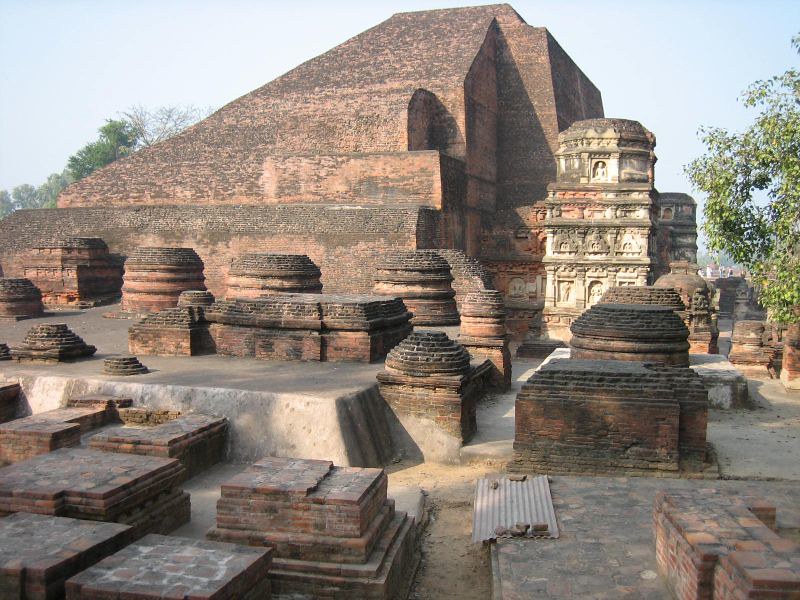
Bindusara | Ancient History of Bihar Part – 7
Bindusara notes/study material for preparation of BPSC Prelims and Mains and other Bihar state examinations
Home » BPSC Study Materials » History of Bihar » Bihar Ancient History » Haryanka Dynasty In Bihar| Ancient History of Bihar Notes
Haryanka Dynasty in Bihar notes/study material for preparation of BPSC Prelims and Mains and other Bihar state examinations
After the Mahajanapadas period, Magadha became the most powerful state in ancient India. Jarasandha, who was a descendant of Brihadratha, founded the Magadha empire. They find mention in Rigveda and Mahabharata as well.
The Magadha Empire (684 BCE to 320 BCE) chronologically encompassed the rule of three dynasties – Haryanka Dynasty, Shishunaga Dynasty, and Nanda Dynasty.
The first important dynasty in Magadha was the Haryanka dynasty. It started from 544 and lasted till 413 BC.
Let us study the important rulers of the Haryanka Dynasty.
Bimbisara was the most important ruler of the Haryanka dynasty. Magadha came into prominence under his leadership.
According to Buddhist chronicles, Bimbisara ruled for 52 years (544 BCE – 492 BCE). He was the son of King Bhattiya.
He was contemporary to both Mahavira and Buddha.
His capital was at Girivraja/Rajagriha (Rajgir) which was surrounded by 5 hills, which gave it a strategic advantage and made Rajagriha impregnable.
He was also known as ‘Sreniya’ because he was the first king to have a standing army.
He first started the practice of using matrimonial alliances to strengthen his political position and expand his empire.
Bimbisara had three wives:
Kosala Devi – She was King of Kosala’s daughter and the sister of Prasenjit. In this matrimonial alliance, he got Kashi village in dowry.
Chellana – She was daughter of the Lichchavi chief of Vaishali. Their son Ajatshatru later became the next king of the Haryanka Dynasty.
Khema – She was daughter of the king of Madra, Punjab.
He had a rivalry with Avanti king Pradyota, however later they became friends when Bimbsara sent his royal physician Jivaka to Ujjain, when Pradyota had jaundice.
He was son of Bimbisara and Chellana.
He killed his father and became ruler.
He followed aggressive policies of blood and war rather than the policy of diplomacy and matrimonial alliances like his father.
He waged wars against Kosala and defeated them.
He also waged a war against Vaishali despite the fact that his mother was a Lichchhavi princess. It took him 16 years to completely destroy Vaishali and annex it to his empire.
He first used a war engine to throw stones like catapults. He also possessed chariots to which deadly weapons were attached which facilitated mass killings.
He patronized Buddhism. He convened the First Buddhist Council at Rajagriha just after the death of Buddha in 483 BCE.
He was the son of Ajatasatru.
He was the last major Haryanka ruler.
He shifted his capital to Pataliputra (Patna) from Rajagriha.
During his reign, he built the fort upon the confluence of the rivers Ganga and Son at Pataliputra.
Succeeded by three kings – Aniruddha, Manda and Nagadasaka.
Nagadashaka was the last ruler of the Haryanka Dynasty. Shishunaga is said to have overthrown Nagadashaka which marked the beginning of Shishunaga Dynasty.
You can study complete ancient history of Bihar in a chapterwise format here : Ancient History of Bihar Chapter-wise notes
You can study complete history of Bihar in a chapterwise format here : History of Bihar Chapter-wise notes
You can study complete study material for BPSC here : Complete BPSC free study material
You can study complete ancient history in a chapterwise format here : Ancient History Chapter-wise notes
You can solve ancient history chapterwise MCQs here : Ancient History Chapter-wise MCQs
You can read all the CivilsCracker Explained articles for Ancient History here : CivilsCracker Explained
You can read all the UPSC free study materials for all subjects here : Free UPSC study materials for all subjects
You can solve chapterwise MCQs for all subjects here : Chapterwise MCQs for all subjects

Bindusara notes/study material for preparation of BPSC Prelims and Mains and other Bihar state examinations

Mauryan Empire and Chandragupta Maurya notes/study material for preparation of BPSC Prelims and Mains and other Bihar state examinations

Nanda Dynasty notes/study material for preparation of BPSC Prelims and Mains and other Bihar state examinations

Shishunaga Dynasty notes/study material for preparation of BPSC Prelims and Mains and other Bihar state examinations

Arrival of Aryans and Mahajanapadas period in Bihar notes/study material for preparation of BPSC Prelims and Mains and other Bihar state examinations

Pre History of Bihar notes/study material for preparation of BPSC Prelims and Mains and other Bihar state examinations